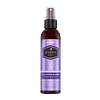What's inside
What's inside
 Key Ingredients
Key Ingredients

No key ingredients
 Benefits
Benefits

 Concerns
Concerns

 Ingredients Side-by-side
Ingredients Side-by-side

Water
Skin ConditioningPolyacrylamide
Phenoxyethanol
PreservativeAmodimethicone
C13-14 Isoparaffin
EmollientIsopropyl Myristate
EmollientParfum
MaskingLaureth-7
EmulsifyingXylose
HumectantHydrolyzed Soy Protein
HumectantTrideceth-6
EmulsifyingHydrolyzed Vegetable Protein Pg-Propyl Silanetriol
Skin ConditioningArginine
MaskingCitric Acid
BufferingCetyl Alcohol
EmollientCetrimonium Chloride
AntimicrobialBehentrimonium Methosulfate
Benzyl Benzoate
AntimicrobialQuaternium-33
Limonene
PerfumingBenzyl Alcohol
PerfumingLinalool
Perfuming2-Oleamido-1,3-Octadecanediol
Skin ConditioningWater, Polyacrylamide, Phenoxyethanol, Amodimethicone, C13-14 Isoparaffin, Isopropyl Myristate, Parfum, Laureth-7, Xylose, Hydrolyzed Soy Protein, Trideceth-6, Hydrolyzed Vegetable Protein Pg-Propyl Silanetriol, Arginine, Citric Acid, Cetyl Alcohol, Cetrimonium Chloride, Behentrimonium Methosulfate, Benzyl Benzoate, Quaternium-33, Limonene, Benzyl Alcohol, Linalool, 2-Oleamido-1,3-Octadecanediol
Water
Skin ConditioningGlycerin
HumectantBiotin
AntiseborrhoeicHydrolyzed Collagen
EmollientCoffea Arabica Seed Oil
MaskingEthylhexylglycerin
Skin ConditioningCetrimonium Chloride
AntimicrobialMaltodextrin
AbsorbentMaltodextrin/Vp Copolymer
Pvp
Emulsion StabilisingPPG-3 Myristyl Ether
EmollientPolysorbate 20
EmulsifyingDehydroacetic Acid
PreservativeBenzoic Acid
MaskingDisodium EDTA
Sodium Hydroxide
BufferingSilicone Quaternium-22
Zea Mays Starch
AbsorbentPhenoxyethanol
PreservativePentaerythrityl Tetra-Di-T-Butyl Hydroxyhydrocinnamate
AntioxidantSodium Benzoate
MaskingCitric Acid
BufferingParfum
MaskingCitronellol
PerfumingCoumarin
PerfumingEugenol
PerfumingGeraniol
PerfumingHydroxycitronellal
PerfumingLimonene
PerfumingLinalool
PerfumingWater, Glycerin, Biotin, Hydrolyzed Collagen, Coffea Arabica Seed Oil, Ethylhexylglycerin, Cetrimonium Chloride, Maltodextrin, Maltodextrin/Vp Copolymer, Pvp, PPG-3 Myristyl Ether, Polysorbate 20, Dehydroacetic Acid, Benzoic Acid, Disodium EDTA, Sodium Hydroxide, Silicone Quaternium-22, Zea Mays Starch, Phenoxyethanol, Pentaerythrityl Tetra-Di-T-Butyl Hydroxyhydrocinnamate, Sodium Benzoate, Citric Acid, Parfum, Citronellol, Coumarin, Eugenol, Geraniol, Hydroxycitronellal, Limonene, Linalool
Ingredients Explained
These ingredients are found in both products.
Ingredients higher up in an ingredient list are typically present in a larger amount.
This ingredient is a preservative, antimicrobial, and emulsifier. It is often used in cosmetics for its ability to cleanse, condition, and reduce static.
Cetrimonium chloride is a quaternary ammonium salt, meaning it has a water-soluble structure.
Citric Acid is an alpha hydroxy acid (AHA) naturally found in citrus fruits like oranges, lemons, and limes.
Like other AHAs, citric acid can exfoliate skin by breaking down the bonds that hold dead skin cells together. This helps reveal smoother and brighter skin underneath.
However, this exfoliating effect only happens at high concentrations (20%) which can be hard to find in cosmetic products.
Due to this, citric acid is usually included in small amounts as a pH adjuster. This helps keep products slightly more acidic and compatible with skin's natural pH.
In skincare formulas, citric acid can:
While it can provide some skin benefits, research shows lactic acid and glycolic acid are generally more effective and less irritating exfoliants.
Most citric acid used in skincare today is made by fermenting sugars (usually from molasses). This synthetic version is identical to the natural citrus form but easier to stabilize and use in formulations.
Read more about some other popular AHA's here:
Learn more about Citric AcidLimonene is a fragrance that adds scent and taste to a formulation.
It's found in the peel oil of citrus fruits and other plants such as lavender and eucalyptus. The scent of limonene is generally described as "sweet citrus".
Limonene acts as an antioxidant, meaning it helps neutralize free radicals.
When exposed to air, oxidized limonene may sensitize the skin. Because of this, limonene is often avoided by people with sensitive skin.
The term 'fragrance' is not regulated in many countries. In many cases, it is up to the brand to define this term. For instance, many brands choose to label themselves as "fragrance-free" because they are not using synthetic fragrances. However, their products may still contain ingredients such as essential oils that are considered a fragrance.
Learn more about LimoneneLinalool is a fragrance and helps add scent to products. It's derived from common plants such as cinnamon, mint, citrus, and lavender.
Like Limonene, this ingredient oxidizes when exposed to air. Oxidized linalool can cause allergies and skin sensitivity.
This ingredient has a scent that is floral, spicy tropical, and citrus-like.
Learn more about LinaloolParfum is a catch-all term for an ingredient or more that is used to give a scent to products.
Also called "fragrance", this ingredient can be a blend of hundreds of chemicals or plant oils. This means every product with "fragrance" or "parfum" in the ingredients list is a different mixture.
For instance, Habanolide is a proprietary trade name for a specific aroma chemical. When used as a fragrance ingredient in cosmetics, most aroma chemicals fall under the broad labeling category of “FRAGRANCE” or “PARFUM” according to EU and US regulations.
The term 'parfum' or 'fragrance' is not regulated in many countries. In many cases, it is up to the brand to define this term.
For instance, many brands choose to label themselves as "fragrance-free" because they are not using synthetic fragrances. However, their products may still contain ingredients such as essential oils that are considered a fragrance by INCI standards.
One example is Calendula flower extract. Calendula is an essential oil that still imparts a scent or 'fragrance'.
Depending on the blend, the ingredients in the mixture can cause allergies and sensitivities on the skin. Some ingredients that are known EU allergens include linalool and citronellol.
Parfum can also be used to mask or cover an unpleasant scent.
The bottom line is: not all fragrances/parfum/ingredients are created equally. If you are worried about fragrances, we recommend taking a closer look at an ingredient. And of course, we always recommend speaking with a professional.
Learn more about ParfumPhenoxyethanol is a preservative that has germicide, antimicrobial, and aromatic properties. Studies show that phenoxyethanol can prevent microbial growth. By itself, it has a scent that is similar to that of a rose.
It's often used in formulations along with Caprylyl Glycol to preserve the shelf life of products.
Water. It's the most common cosmetic ingredient of all. You'll usually see it at the top of ingredient lists, meaning that it makes up the largest part of the product.
So why is it so popular? Water most often acts as a solvent - this means that it helps dissolve other ingredients into the formulation.
You'll also recognize water as that liquid we all need to stay alive. If you see this, drink a glass of water. Stay hydrated!
Learn more about Water